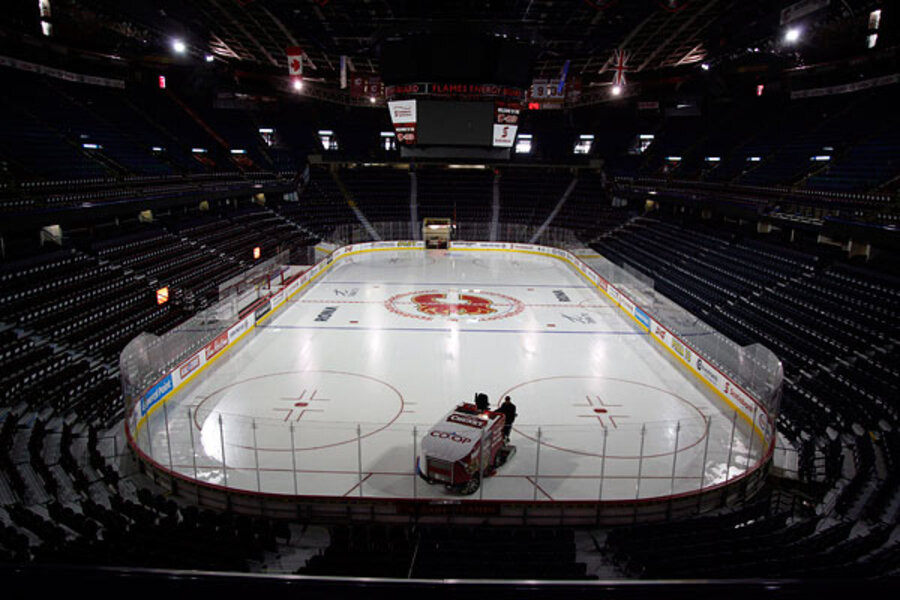NHL lockout over, but why did it take so long?
Loading...
| Chicago
Even as Zambonis across the United States and Canada are being dusted off for a shortened professional hockey season, the question remains: What took so long?
When the National Hockey League and its Players' Association produced a new labor deal early Sunday, following a 16-hour negotiating session in New York City, the lockout had taken 113 days and claimed nearly half the 2012-13 season. This after lockouts consumed the entire 2004-05 season and part of the 1994-95 season. Surely, there must have been a good reason?
Analysts tracking the stalemate say it was relatively simple, and it points to a chronic problem made worse by the NHL's ill-advised expansion in the 1990s: Many of hockey's owners are repeatedly drawn into spending more money than they have in a bid to be competitive, meaning the once-a-decade labor negotiations become a desperate attempt to persuade players to help save the owners from themselves.
This time, one of the core disagreements was about a new breed of absurd contracts that owners sanctioned to get around their own salary cap. Take the New Jersey Devils' Ilya Kovalchuk, who in 2010 signed a 15-year, $100 million deal that would have him playing until he is 42.
The idea was to spread a player's salary over a huge span of time so the average annual salary – which is what is counted against the cap – can be relatively low, even as teams front-load the contracts to give players the majority of the money in their prime.
Just this offseason, the Minnesota Wild signed the top two free agents to such "supercontracts." Zach Parise and Ryan Suter each received $98 million contracts, which would be paid in a massive upfront bonus ($25 million) and then in incremental installments over 13 years.
Yet even before Wild owner Craig Leipold signed the contracts in April, he was complaining about them. He told the Minneapolis Star-Tribune his team is “not making money” and that long-term contracts represented “one reason we need to fix our system.… The revenue that we’re generating is not the issue as much as our expenses. And [the Wild's] biggest expense by far is player salaries.”
“It is true that a very significant amount of their revenues went to salaries, and the union realized this and was willing to cut back," says Mark Conrad, a professor of sports law at Fordham University in New York City. "But sometimes these collective bargaining agreements are made to protect owners from themselves, because they are the ones who sign these long-term contracts.”
Professor Conrad has some sympathy for the Leopolds of the NHL. Star players are a limited commodity and therefore have enormous leverage.
“The elite players drive the market up. It’s a very controlled labor market because of that,” he says.
Yet much of the NHL's current cycle of crisis was foreseeable when the NHL expanded into non-hockey markets in the 1990s in the bid to become a national brand, say others.
The league diluted total revenues by giving out too many licenses to underserved markets like Columbus, Ohio, and Atlanta, says Frank Shorr, director of the Boston University Sports Institute. There are currently 30 NHL teams; in 1990, there were 21.
“The owners were willing to hand out all these licenses, but they didn’t really understand that, down the line, they were going to face empty seats,” he says.
Because professional hockey does not earn as much in corporate sponsorships and television revenue as baseball, basketball, or football, the league was weakened when teams in non-hockey markets failed to pull their weight at the gates.
“You’ve got a sport that doesn’t appeal to a large number of fans and viewers. Because they don’t have the TV revenue, they have to charge exorbitant ticket prices, and the only way to keep costs down is keep salaries down. But if you keep salaries down, it doesn’t attract a decent team,” he says. “There are no secrets here, but they waited way too long to figure that out.”
In hitting the reset button this time, the NHL and NHLPA agreed to contract limits. Now, a contract can be no longer than seven years, unless a team is re-signing its own player – those contracts can run eight years. New rules also prevent teams from front-loading contracts so dramatically. Other terms of the agreement include recalibrating how league revenues are divided between players and owners and deciding where to set salary caps.
The new season will likely begin either Jan. 15 or Jan. 19 and run either 50 or 48 games. The new agreement will last 10 years, with either side able to opt out after eight years.







